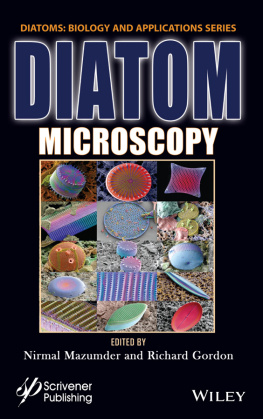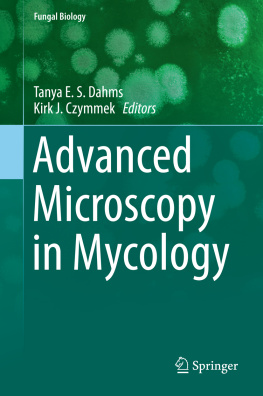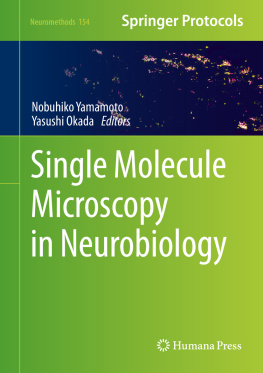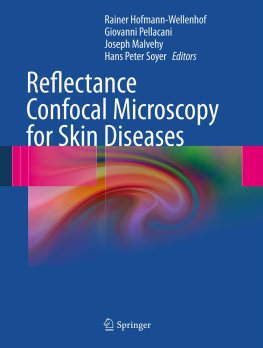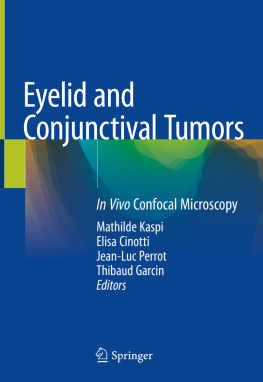
Scrivener Publishing
100 Cummings Center, Suite 541J
Beverly, MA 01915-6106
Diatoms: Biology and Applications
Series Editors: Richard Gordon () and Joseph Seckbach
()
Scope: The diatoms are a single-cell algal group, with each cell surrounded by a silica shell. The shells have beautiful attractive shapes with multiscalar structure at 8 orders of magnitude, and have several uses. 20% of the oxygen we breathe is produced by diatom photosynthesis, and they feed most of the aquatic food chain in freshwaters and the oceans. Diatoms serve as sources of biofuel and electrical solar energy production and are impacting on nanotechnology and photonics. They are important ecological and paleoclimate indicators. Some of them are extremophiles, living at high temperatures or in ice, at extremes of pH, at high or low light levels, and surviving desiccation. There are about 100,000 species and as many papers written about them since their discovery over three hundred years ago. The literature on diatoms is currently doubling every ten years, with 50,000 papers during the last decade (2006-2016). In this context, it is timely to review the progress to date, highlight cutting-edge discoveries, and discuss exciting future perspectives. To fulfill this objective, this new Diatom Series is being launched under the leadership of two experts in diatoms and related disciplines. The aim is to provide a comprehensive and reliable source of information on diatom biology and applications and enhance interdisciplinary collaborations required to advance knowledge and applications of diatoms.
Publishers at Scrivener
Martin Scrivener ()
Phillip Carmical (
Diatom Microscopy
Edited by
Nirmal Mazumder
Manipal Academy of Higher Education, Karnataka, India
and
Richard Gordon
Gulf Specimen Marine Laboratory & Aquarium, Panacea, FL., USA and C.S. Mott
Center for Human Growth & Development, Department of Obstetrics & Gynecology,
Wayne State University, Detroit MI., USA

This edition first published 2022 by John Wiley & Sons, Inc., 111 River Street, Hoboken, NJ 07030, USA and Scrivener Publishing LLC, 100 Cummings Center, Suite 541J, Beverly, MA 01915, USA
2022 Scrivener Publishing LLC
For more information about Scrivener publications please visit www.scrivenerpublishing.com.
All rights reserved. No part of this publication may be reproduced, stored in a retrieval system, or transmitted, in any form or by any means, electronic, mechanical, photocopying, recording, or otherwise, except as permitted by law. Advice on how to obtain permission to reuse material from this title is available at http://www.wiley.com/go/permissions.
Wiley Global Headquarters
111 River Street, Hoboken, NJ 07030, USA
For details of our global editorial offices, customer services, and more information about Wiley products visit us at www.wiley.com.
Limit of Liability/Disclaimer of Warranty
While the publisher and authors have used their best efforts in preparing this work, they make no representations or warranties with respect to the accuracy or completeness of the contents of this work and specifically disclaim all warranties, including without limitation any implied warranties of merchant-ability or fitness for a particular purpose. No warranty may be created or extended by sales representatives, written sales materials, or promotional statements for this work. The fact that an organization, website, or product is referred to in this work as a citation and/or potential source of further information does not mean that the publisher and authors endorse the information or services the organization, website, or product may provide or recommendations it may make. This work is sold with the understanding that the publisher is not engaged in rendering professional services. The advice and strategies contained herein may not be suitable for your situation. You should consult with a specialist where appropriate. Neither the publisher nor authors shall be liable for any loss of profit or any other commercial damages, including but not limited to special, incidental, consequential, or other damages. Further, readers should be aware that websites listed in this work may have changed or disappeared between when this work was written and when it is read.
Library of Congress Cataloging-in-Publication Data
ISBN 978-1-119-71153-7
Cover image: Provided by the editors
Cover design by Russell Richardson
Set in size of 11pt and Minion Pro by Manila Typesetting Company, Makati, Philippines
Printed in the USA
10 9 8 7 6 5 4 3 2 1
Preface
Diatoms are photosynthetic, unicellular algae and estimated to have more than 20,000 to 2 million species. They are abundantly found in marine and freshwater ecosystems with their cell walls made of silica. This book on Diatom Microscopy provides an introduction to the wide panoply of microscopy methods being used to investigate diatom structure and biology, marking considerable advances in recent technology including wide-field, fluorescence, confocal, super-resolution optical microscopy, electron microscopy, surface enhanced Raman spectroscopy, atomic force microscopy (AFM) and spectroscopy as applied to diatoms. Each chapter includes a tutorial on a microscopy technique and reviews its applications in diatom research. It will be of great value to both students and researchers working in the field of development of biosensors and biomedical devices using diatoms. The number of diatomists, diatom research and their publications are increasing rapidly. Although a number of books have dealt with various aspects of diatom biotechnology, nanotechnology and morphology, to our knowledge, no volume exists that summarizes advanced microscopic approaches to diatoms.
In Diatom Microscopy, weve gathered articles exploring the various exciting aspects of advanced microscopy techniques and their aspects in technology development as well as applications. The first chapter by Khan et al. [1.5], electron microscopic images are observed to study the ornate structures of diatoms from about 65 geographically distant origins of water bodies in India, the river Thames in the United Kingdom, samples from the Natural History Museum Basel, Switzerland and fossilized diatoms from Oamaru. Studying the wide distribution of different site-specific diatom genera from fresh and marine waterbodies contributes to gaining information about biodiversity and its wide application in life and material sciences. In many biological studies, it is highly desirable to visualize and analyze three-dimensional (3D) views of any organism before extending its applications. Since the size of diatoms ranges between 2-500 m, optical microscopy can be used to visualize them. Shih-Ting Lin et al. [1.6], have given a detailed insight into the importance of optical microscopy in the study of diatoms. Optical imaging provides spatial resolution at the submicrometer scale without harming the specimens. Image post-processing and reconstruction also make it possible to render the structure of samples in 3D via optical sectioning. The authors have explored various types of light microscopy, fluorescence microscopy, confocal laser scanning microscopy, multiphoton microscopy, and super-resolution optical microscopy, within the context of diatom research and the applicability of this work to eco-environmental science and biomedicine. Further, Umemura
Next page
